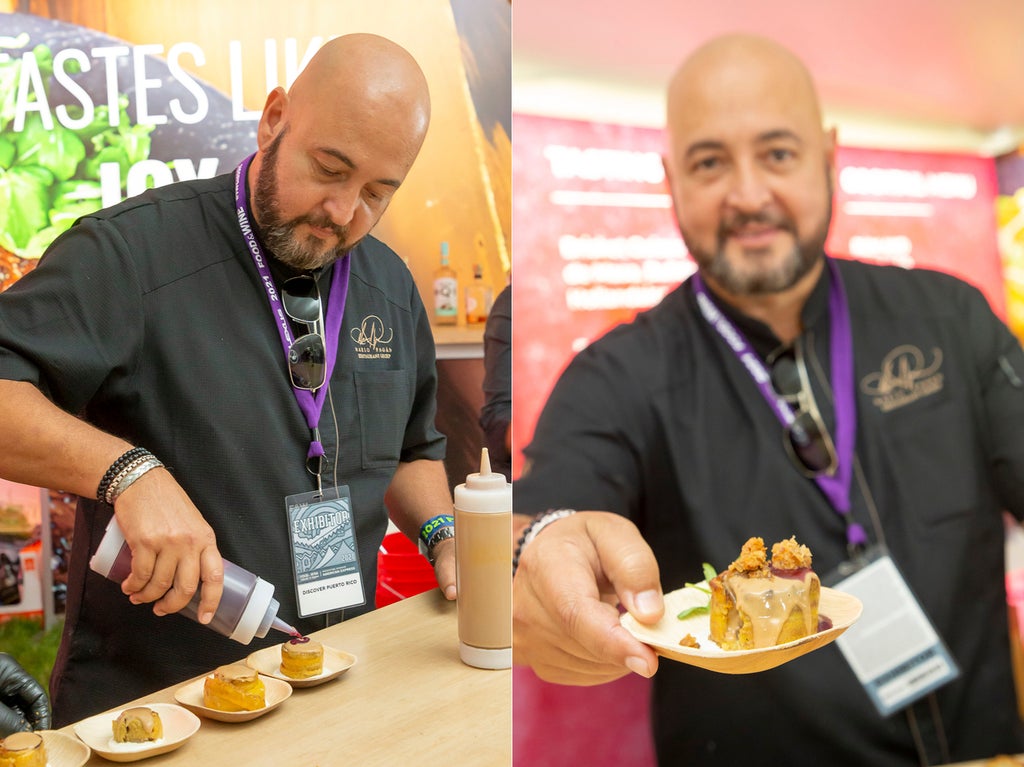
The Puerto Rican food scene had reached its peak. Young chefs were inventing delicious new creations, restaurants popped up all over the island, the industry was no longer reliant on tourist season.
Then a series of calamities hit: a hurricane, a series of earthquakes, a pandemic.
Each time, Puerto Ricans recovered and rebuilt — restaurant owners right there with them. Now, as the pandemic starts to wane, the Puerto Rican food scene is thriving again.
“It's been rocky, but we're resilient,” said chef Mario Pagán, who owns five restaurants in Puerto Rico. “You can definitely see it coming back around now.”
Traditional Puerto Rican cuisine is a blend of African, Spanish and Caribbean flavors, with stews, fish, arroz con pollo, mofongo, sofrito and adobo among the staples.
The scene began to expand as young chefs took what they learned from universities and culinary schools to the streets. They put modern spins on traditional Puerto Rican foods, often creating fusions with other types of cuisine, like Asian or Italian.
New restaurants spread across the island as locals craved more options, and vacation home rentals gave visitors more choices besides the hotels of San Juan.
By 2017, Puerto Rico had more than 5,000 restaurants, from cafeterias and bakeries to fine dining, according to Jose Vazquez, president of the Restaurants Association of Puerto Rico. The restaurant industry is the third-largest on the island — behind manufacturing and tourism — accounting for roughly 60,000 jobs directly, another 40,000 indirectly. About 6% of the gross national product is attributed to restaurant sales.
“The culinary industry is part of our culture,” Vazquez said. “People love our food. They fly down here and want to try our local cuisine. It’s very good food.”
The first big hit came with Hurricane Maria in 2017. The Category 5 storm devastated the island, flattening buildings, knocking out power and communications, leaving roads impassible, residents without food or water. About 90% of all businesses and restaurants were wiped out.
Restaurant owners jumped into action and, with the help of chef José Andrés and food/product supplier Frutos del Guacabo, set up makeshift kitchens that served more than 3.5 million meals as Puerto Ricans tried to get back on their feet. Restaurants slowly began reopening — some scaled down, others in new locations — and by late 2019, there were about 4,000 operating on the island.
Then, the earthquakes.
Puerto Rico was hit with a swarm of earthquakes starting that December, the most damaging a magnitude 6.4. The earthquakes centered on southern Puerto Rico, but the effects spread across the island as businesses and schools were closed for weeks.
Restaurants on other parts of the island managed to get by, and Fruto del Gaubacho, which supplies roughly 200 restaurants and hotels, worked to get food and supplies to the hard-hit areas in the south.
“Each time it’s a different test,” Fruto del Gaubacho co-owner Efrén Robles said. “You learn the test and then they change the answers... We’ve been able to adjust in a very short amount of time.”
The learning curve took another sharp turn in 2020 with the COVID-19 pandemic.
Puerto Rico rebounded from the earthquakes to have some of the best tourism numbers in its history and restaurants were doing well, even during the offseason.
The pandemic, as it did around the world, led to shutdowns. More than 1,000 restaurants just in the San Juan area were forced to shutter, but many were able to survive by offering takeout and delivery options. Some created packages for holidays like Christmas, Thanksgiving and Mother's Day.
Because Puerto Rico is a small island, COVID-19 measures were widely enforced, while standards in the rest of the United States often varied from state to state. Restaurants rode the ebbs and flows of the pandemic, some opening at limited capacity by May and expanding from there as restrictions began to loosen.
As the pandemic has started to wind down, the restaurant industry has skyrocketed, returning to pre-disaster numbers as lodging in 2021 reached $1.3 billion — 37% higher than the previous record in 2019.
“It's been rocky and pretty hard, but we're coping,” Pagán said during the Aspen Food & Wine Classic last fall. “It has been one thing after another, but we are very resilient.”
And they will be ready for whatever comes next.







